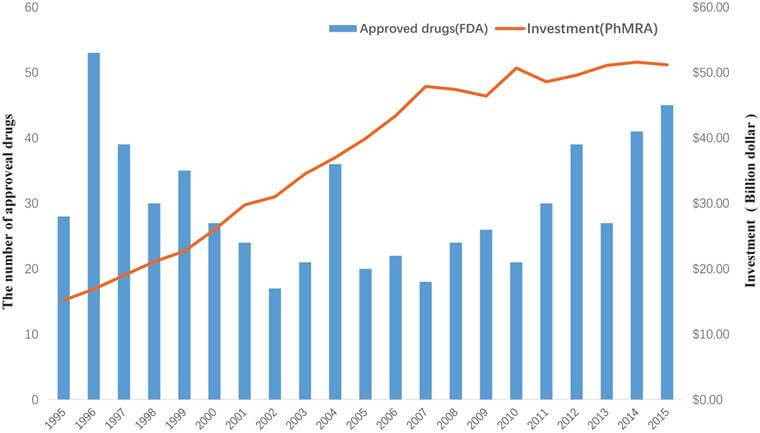
In the high-stakes world of pharmaceutical development, effective patent portfolio management can mean the difference between blockbuster success and costly failure. As drug development costs continue to soar and competition intensifies, companies must adopt strategic approaches to protect their innovations and maximize return on investment. This article explores the best practices for drug patent portfolio management, drawing insights from industry experts and real-world examples.
Understanding the Importance of Patent Portfolio Management
Patent portfolio management in the pharmaceutical industry is more than just filing patents; it’s about creating a comprehensive strategy that aligns with business objectives, protects innovations, and creates value.
Dr. Elizabeth Chen, Chief Patent Counsel at BioPharm Innovations, emphasizes:
“A well-managed patent portfolio is a pharmaceutical company’s most valuable asset. It’s not just about quantity; it’s about quality, strategic alignment, and forward-thinking protection.”
Key Components of Effective Drug Patent Portfolio Management
1. Strategic Patent Filing
Strategic patent filing involves carefully timing patent applications to maximize protection duration and coverage. This includes considering:
- Priority dates
- International filing strategies
- Continuation and divisional applications
2. Comprehensive Coverage
Effective portfolio management ensures protection for various aspects of a drug, including:
- Compound structure
- Formulations
- Methods of synthesis
- Therapeutic uses
- Delivery mechanisms
3. Regular Portfolio Review
Periodic reviews of the patent portfolio are crucial. This involves:
- Assessing the strength and relevance of existing patents
- Identifying gaps in protection
- Aligning the portfolio with current business strategies
4. Competitive Intelligence
Staying informed about competitors’ patent activities is vital. This includes:
- Monitoring new patent filings in the field
- Analyzing potential infringement risks
- Identifying opportunities for licensing or collaboration
Best Practices for Drug Patent Portfolio Management
1. Align Patent Strategy with Business Objectives
Patent strategy should be closely aligned with overall business goals. Dr. Michael Roberts, VP of IP Strategy at PharmaCorp, notes:
“Your patent portfolio should reflect your company’s long-term vision. Are you focusing on specific therapeutic areas? Planning to enter new markets? Your patent strategy should support these objectives.”
2. Implement a Lifecycle Management Approach
Effective portfolio management considers the entire lifecycle of a drug, from early-stage research to post-market strategies. This includes:
- Filing patents on improvements and new uses
- Developing next-generation products
- Exploring combination therapies
3. Leverage Data Analytics and AI
Modern portfolio management increasingly relies on advanced analytics and artificial intelligence to:
- Identify filing trends
- Predict patent strength
- Optimize filing strategies
4. Foster Cross-Functional Collaboration
Successful patent portfolio management requires collaboration between various departments, including:
- R&D
- Legal
- Business Development
- Marketing
5. Develop a Global Strategy
With pharmaceutical markets becoming increasingly global, patent portfolios must be managed with an international perspective. This involves:
- Understanding different patent laws across jurisdictions
- Strategically selecting countries for patent filings
- Considering regional patent systems (e.g., European Patent Office)
Case Study: Amgen’s Enbrel
Amgen’s management of the patent portfolio for its rheumatoid arthritis drug Enbrel is often cited as a masterclass in lifecycle management. Through strategic patent filings on various aspects of the drug, including its method of manufacture, Amgen has maintained market exclusivity for Enbrel far beyond the expiration of its original compound patent.
Challenges in Drug Patent Portfolio Management
Balancing Cost and Coverage
Patent filings and maintenance can be expensive, especially on a global scale. Companies must balance comprehensive protection with budget constraints.
Navigating Regulatory Changes
Patent laws and regulations can vary significantly between countries and may change over time. Staying informed and adapting strategies accordingly is crucial.
Addressing Patent Cliffs
As key patents expire, companies face significant revenue drops. Effective portfolio management includes strategies to mitigate these “patent cliffs.”
The Future of Drug Patent Portfolio Management
As the pharmaceutical landscape evolves, so too must patent portfolio management strategies. Emerging trends include:
- Increased focus on precision medicine patents
- Growing importance of data-related patents in digital health
- Rising significance of manufacturing process patents
Dr. Sarah Thompson, a patent strategy consultant, predicts:
“We’re moving towards more dynamic, AI-driven portfolio management. Companies that can quickly adapt their strategies based on real-time data and market changes will have a significant advantage.”
Conclusion
Effective drug patent portfolio management is a complex but critical aspect of pharmaceutical business strategy. By aligning patent strategies with business objectives, leveraging advanced technologies, fostering collaboration, and maintaining a global perspective, companies can maximize the value of their innovations and maintain competitive advantage in a challenging market.
“In the pharmaceutical industry, a well-managed patent portfolio is not just a legal asset—it’s a key driver of business success and innovation.” – Dr. Elizabeth Chen, Chief Patent Counsel, BioPharm Innovations
By adopting these best practices, pharmaceutical companies can navigate the complex landscape of drug development and commercialization with greater confidence and success.
Sources:
- World Intellectual Property Organization. (2023). “Patent Landscape Report on Vaccines for Selected Infectious Diseases.”
- Journal of Commercial Biotechnology. (2022). “Strategic Patent Management in the Pharmaceutical Industry.”
- Nature Biotechnology. (2023). “The Changing Landscape of Pharmaceutical Patents.”
- Harvard Business Review. (2021). “Rethinking Intellectual Property Strategy in the AI Era.”
- PhRMA. (2023). “Biopharmaceutical Research & Development: The Process Behind New Medicines.”
- European Patent Office. (2023). “Annual Report on Pharmaceutical Patents.”
- USPTO. (2022). “Patent Examination Guidelines for Pharmaceutical Inventions.”
- Biotechnology Innovation Organization. (2023). “The State of Innovation in Highly Prevalent Chronic Diseases.”
























